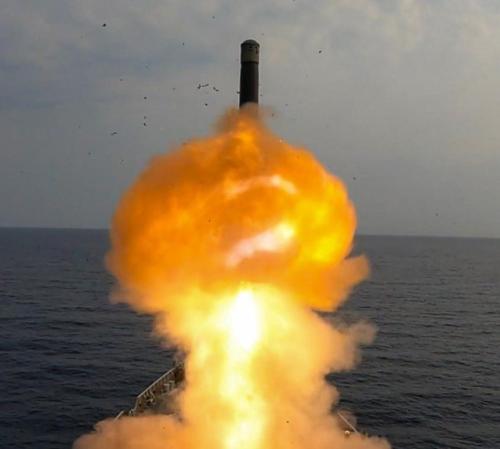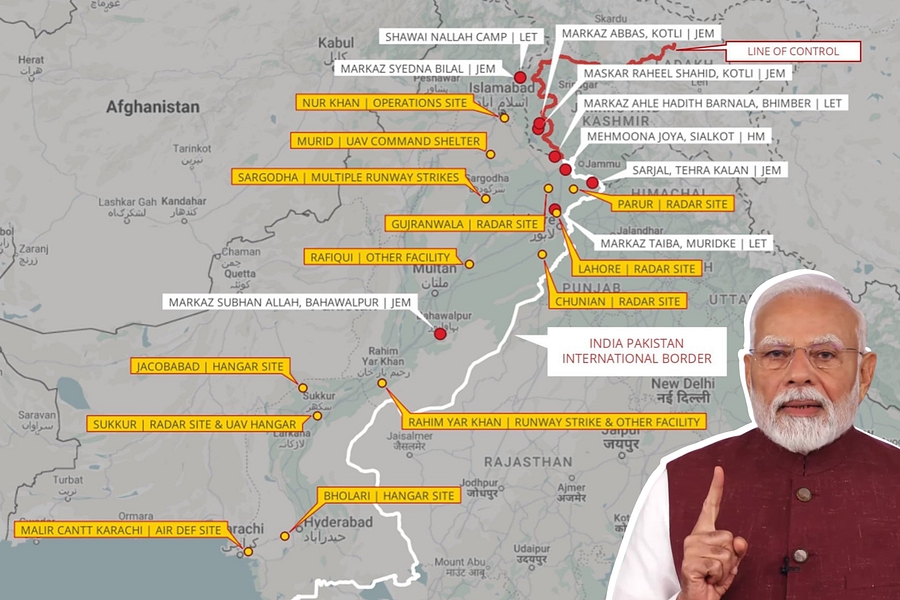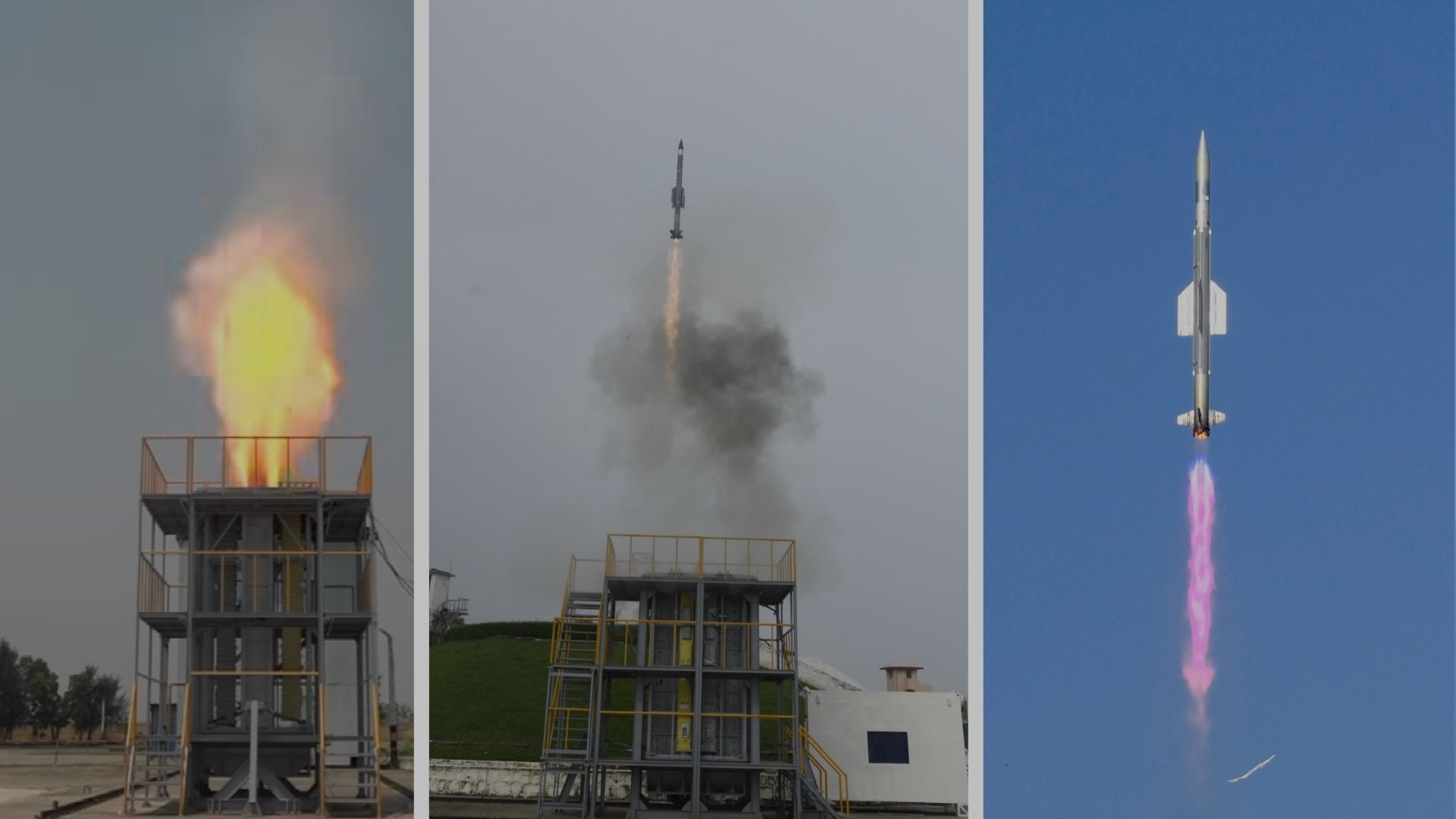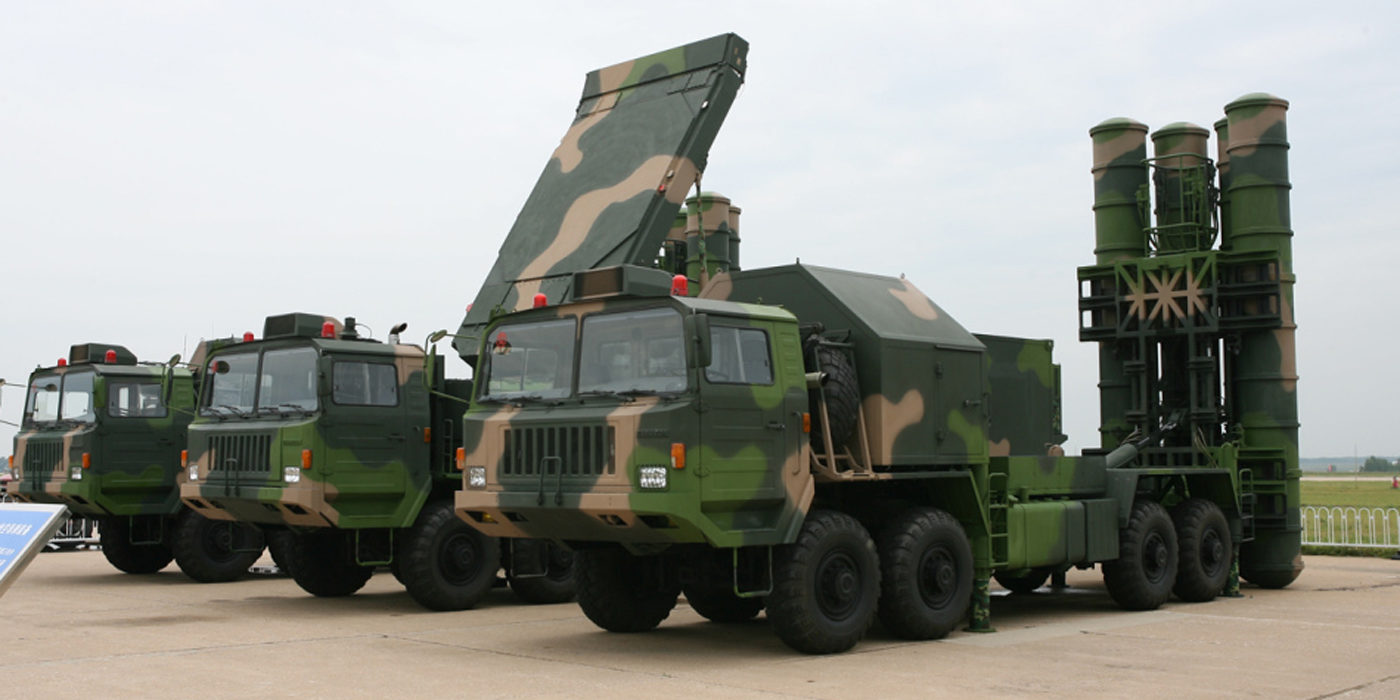SOURCE: RAUNAK KUNDE / NEWS BEAT / IDRW.ORG


In a significant blow to Pakistan’s air defense capabilities, the Indian Air Force (IAF) has destroyed a Chinese-supplied YLC-8E anti-stealth radar stationed at the Chunian Air Base in central Punjab, identified as a frontline operational station. The radar, developed by the Chinese state-owned China Electronics Technology Group Corporation (CETC) and touted as the “flagship of Chinese stealth radar,” was obliterated during India’s Operation Sindoor, a retaliatory strike launched on May 7, 2025, targeting terrorist infrastructure and military assets in Pakistan.
The YLC-8E, a UHF-band 3D surveillance radar, was donated to Pakistan by China in 2023 from the People’s Liberation Army’s own inventory, reportedly to counter India’s superior ELM-2090U Ultra UHF radars deployed by the IAF. Described by China’s state-owned Global Times as the world’s first UHF-band anti-stealth radar system, the YLC-8E features a massive antenna—equivalent to two badminton courts—and leverages high-power, cutting-edge information processing technology to detect advanced stealth aircraft, including the U.S. F-22 and F-35, at ranges exceeding 500 kilometers. It is also designed to track missile threats up to 700 kilometers, offering high-definition targeting and independent guidance capabilities. The radar’s active phase-controlled array and novel anti-stealth technology were marketed as superior to foreign competitors, positioning it as a backbone of modern air defense networks.
Continue readingSOURCE: RAUNAK KUNDE / NEWS BEAT / IDRW.ORG


India’s Defence Research and Development Organisation (DRDO) displayed its indigenously developed Long Range Land Attack Cruise Missile (LRLACM) at the DEFEA 2025 exhibition in Athens, Greece, drawing significant attention from global defense communities. The subsonic cruise missile, with a strike range of 1,000 km, underscores India’s growing prowess in advanced missile technology and its push toward self-reliance in defense manufacturing.
The LRLACM, a new variant of the Nirbhay missile, was first successfully flight-tested on November 12, 2024, at the Integrated Test Range in Chandipur, Odisha. Developed by the Aeronautical Development Establishment (ADE) in Bengaluru, with contributions from other DRDO labs and Indian industries like Bharat Dynamics Limited and Bharat Electronics Limited, the missile is designed for precision strikes on strategic land targets. Its terrain-hugging flight path and subsonic speed enhance stealth, making it difficult for enemy defenses to detect and intercept.
Continue readingSOURCE: AFI


On May 10, 2025, the Indian Air Force (IAF) delivered a crippling blow to the Pakistan Air Force (PAF) with a precision strike on PAF Base Bholari, destroying a SAAB 2000 Erieye Airborne Early Warning and Control (AEW&C) aircraft. The operation, part of India’s retaliatory campaign dubbed #OperationSindoor2, has been termed the “Bholari Catastrophe” due to the significant tactical error by the PAF that left the high-value asset vulnerable.
According to posts on X by user Hukum (@hukum2082), the IAF’s Integrated Air Command and Control System (IACCS) in the western sector had been closely monitoring all airborne SAAB 2000 Erieye aircraft over Pakistani airspace, identifying them as high-priority targets. At around 12:00 PM on May 10, an Erieye from PAF’s No.3 Squadron, call sign “Overlord 3,” was flagged landing at Bholari after an extended mission. The aircraft, typically based at PAC Kamra, had been deployed to Bholari as part of Pakistan’s Mission Bunyan-ul-Marsoos, a response to India’s ongoing operations following the Pahalgam terror attack on April 22, which killed 26 civilians.
Continue readingSOURCE: AFI


In a recent escalation of tensions between India and Pakistan, a Pakistani Air Force (PAF) YiHA loitering munition drone was shot down over Indian territory, revealing handwritten messages on its debris that have sparked both amusement and criticism. The drone, identified by its wreckage, bore taunting notes from PAF personnel, including one that read, “KHAGGA & LIQUIDFIRE CAMPING FROM 500 NM AWAY,” alongside a smiley face and other scribbles like “23-013” and “KEEP WATCHING.”
The drone, appears to be a YiHA loitering munition drone Images of the wreckage show a compact airframe with a piston engine, a wooden propeller, and a pointed nose, suggesting it was designed for extended range operations. However, the PAF’s attempt to send a message—literally and figuratively—backfired as the drone was swiftly intercepted and downed, likely by India’s advanced air defense systems.
Continue readingSOURCE: AFI


Recent satellite imagery of Udhampur Airport in India, dated May 11, 2025, has debunked circulating claims of runway damage following a reported strike. Analysis by geospatial intelligence expert Damien Symon (@detresfa) indicates that the airstrip remains fully operational, with no visible signs of impact on the runway itself. The imagery, spanning from April 21 to May 11, 2025, suggests that ongoing maintenance work, which began in April, may have been misinterpreted as strike-related damage.
The sequence of images provides a clear timeline: on April 21, 2025, the runway appeared normal with visible work in progress. By April 26, 2025, maintenance activities continued, with markings appearing on the runway but no signs of disruption. The latest imagery from May 11, 2025, labeled as “post-strike,” confirms the runway’s normal condition, aligning with the ongoing maintenance narrative. A separate image released by the Pakistan Air Force (PAF), which purported to show strike damage, actually depicted disturbances in the soil outside the runway boundary, further supporting the absence of direct impact on the airstrip.
Continue readingSOURCE: AFI


On May 11, 2025, the Director General of Inter-Services Public Relations (DGISPR) of Pakistan made a bold claim that “dozens of Pakistani armed drones hovered over Indian major cities, sensitive political and government facilities, including their capital New Delhi and from J&K to Gujarat.” The statement, intended to project Pakistan’s military prowess amid ongoing tensions with India, has instead sparked widespread mockery and skepticism, both domestically and internationally.
The DGISPR’s assertion comes in the wake of heightened conflict between the two nuclear-armed neighbors, following a series of drone and missile exchanges. India has reported intercepting hundreds of Pakistani drones across its western border since May 7, with the Indian Air Force (IAF) and Army successfully neutralizing most threats using advanced air defense systems like the S-400 and indigenous D4 counter-drone technology. On the other hand, Pakistan claims to have downed 25 Indian drones over its cities, including Lahore and Karachi, though these claims remain unverified by independent sources.
Continue readingSOURCE: IANS


In a firm declaration, Prime Minister Narendra Modi on Monday made it clear to the world that terror and diplomacy — or terror and trade — cannot co-exist. He further emphasised that “blood and water cannot flow together”, reinforcing India’s stance that a meaningful dialogue with Pakistan can only proceed once terrorism and its promotion are eradicated completely from the soil of the neighbouring country.
Trade, cooperation, and diplomacy must be built on trust, not on terror, the Prime Minister asserted. In his speech, the message was clear that India has taken an uncompromising stance against cross-border terrorism, placing the “Indus Waters Treaty in abeyance” as a firm response to Pakistan’s persistent aggression.
Continue readingSOURCE: PTI


At a serious military briefing, one doesn’t expect high literature and text from epics to be quoted by a battle-hardened air warrior to drive home a point.
Director General of Air Operations, IAF, Air Marshal A K Bharti, though stunned and captivated a large gathering of generally cynical journalists by quoting a couplet from Ramcharitmanas to expound on Lord Ram’s patience and anger at the Sea God.Without reading from any paper, the Air Marshal fluently recited the couplet — ‘Vinay Na Manat Jaldhi Jad, Bhaye Teen Din Beet, Bole Ram Sakop Tab, Bhay Binu Hoi Na Preeti’.
Continue readingSOURCE: IANS


Prime Minister Narendra Modi said on Monday that the effectiveness of ‘Made in India’ defence equipment was decisively proven during Operation Sindoor against Pakistan, in which terrorist hubs were wiped out with precision strikes and heavy damage was also caused to airbases deep inside enemy territory.
“The world is now witnessing the arrival of ‘Made in India’ defence system as a formidable force in 21st-century warfare, PM Modi said in his address to the nation. PM Modi highlighted that India’s precise and forceful strikes had left Pakistan in deep frustration, pushing it into desperation.
Continue readingSOURCE: IANS


Prime Minister Narendra Modi has decisively dismantled Pakistan’s long-standing reliance on nuclear threats as a protective shield for terrorism. Addressing the nation on Monday, he asserted that the era of “nuclear blackmailing” is over and that India will no longer tolerate attempts to use nuclear posturing as leverage.
He told the world that India has decisively “redefined the nuclear threat equation”, asserting that nuclear blackmail will no longer serve as a shield for terrorism.
Continue readingSOURCE: PTI


The Indian Air Force (IAF) on Monday trashed social media rumours that it hit Pakistan’s Kirana Hills, which reportedly has a nuclear facility. “We have not hit Kirana hills, whatever is there,” Director General of Air Operations Air Marshal AK Bharti said at a media briefing on Operation Sindoor.
He was asked about social media rumours that India hit a site called Kirana Hills that reportedly has a nuclear storage facility during its counter-offensive.
Continue readingSOURCE: IANS


Nuclear blackmail will not come in India’s resolve to hit terror at its root in any part of the world, Prime Minister Narendra Modi said on Monday, sending a strong message to the global community against the backdrop of ‘Operation Sindoor’.
In his first address to the nation after an understanding on ceasefire with Pakistan and the launch of Operation Sindoor, PM Modi said military action in terror hubs in neighbouring country has set a new normal in the country’s tough three-pronged anti-terror policy.
Continue readingSOURCE: IDRW.ORG


In a recent interview with idrw.org, a senior official from India’s Defence Research and Development Organisation (DRDO) revealed that the organization is examining a recovered Chinese PL-15E missile but dismissed claims of its technological superiority. The official asserted that the PL-15E, often touted by China as a cutting-edge beyond-visual-range air-to-air missile (BVR-AAM), is not as advanced as portrayed and lags behind India’s indigenous Astra missile systems.
“While we will study the PL-15E to understand its capabilities, there’s little to copy. It’s not the leap forward China would like the world to believe,” the official stated. He emphasized that India’s Astra MkII BVR-RAM (Beyond Visual Range – Radar Active Missile) and the upcoming Astra MkIII are significantly superior in performance, range, and technological sophistication compared to the PL-15E.
Continue readingSOURCE: IDRW.ORG


Following the proven success of India’s indigenously developed Akash and Medium-Range Surface-to-Air Missile (MR-SAM) systems in the recent Indo-Pakistan clash, the Ministry of Defence (MoD) is now prioritizing the acquisition of low-tier missile systems to counter emerging aerial threats. The MoD’s new focus targets the procurement of Very Short-Range Air Defence Systems (VSHORADS), Vertically Launched Short-Range Surface-to-Air Missiles (VL-SAM), and Quick Reaction Surface-to-Air Missiles (QRSAM) to neutralize drones, Unmanned Aerial Vehicles (UAVs), and even manned aircraft.
The Akash and MR-SAM systems demonstrated exceptional precision and reliability during the conflict, effectively neutralizing enemy targets and reinforcing India’s air defense capabilities. Building on this success, the MoD aims to strengthen the lower tier of its air defense architecture to address the growing threat of low-cost, agile aerial platforms like drones and UAVs, which have become increasingly prevalent in modern warfare.
Continue readingSOURCE: AFI


Chinese netizens have taken to social media platforms to express sharp criticism of the Pakistani Army and Air Force, accusing them of lacking professionalism in deploying the Chinese-made HQ-9 air defense system. The backlash comes in the wake of India’s successful missile strikes during Operation Sindoor on May 7, 2025, which not only penetrated Pakistani airspace but also reportedly destroyed several HQ-9 units, exposing vulnerabilities in Pakistan’s air defense network.
According to posts circulating on Chinese social media, netizens have blamed inadequate training and operational inefficiencies on the Pakistani side for the failure of the HQ-9 system to counter Indian missile attacks. India’s precision strikes, which targeted terror bases in Pakistan and Pakistan-occupied Kashmir (PoK), involved advanced munitions like the French-origin SCALP cruise missiles launched from Rafale jets. These missiles, known for their stealth and low-altitude flight capabilities, bypassed Pakistan’s air defense systems, including the HQ-9 and HQ-16, without interception.
Continue reading